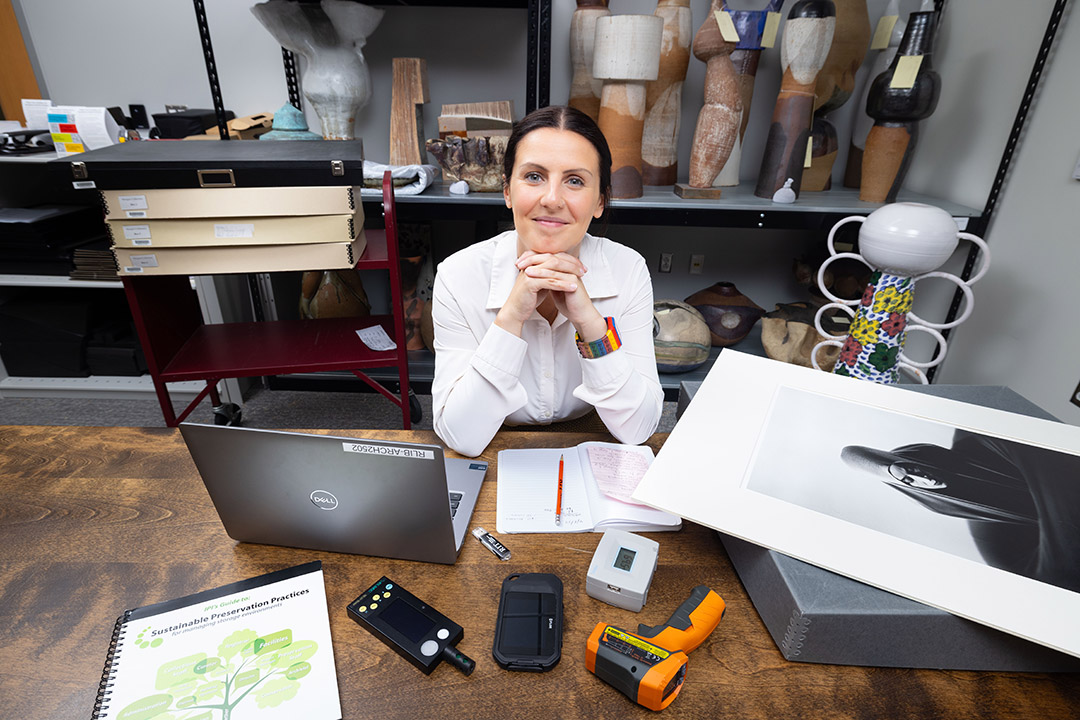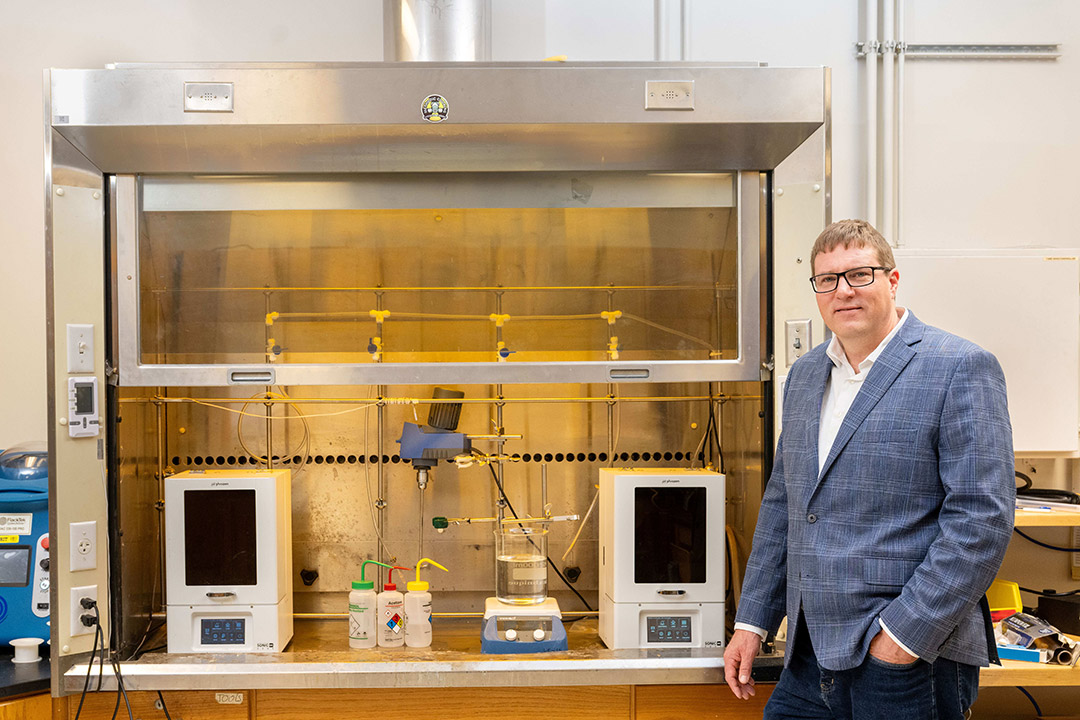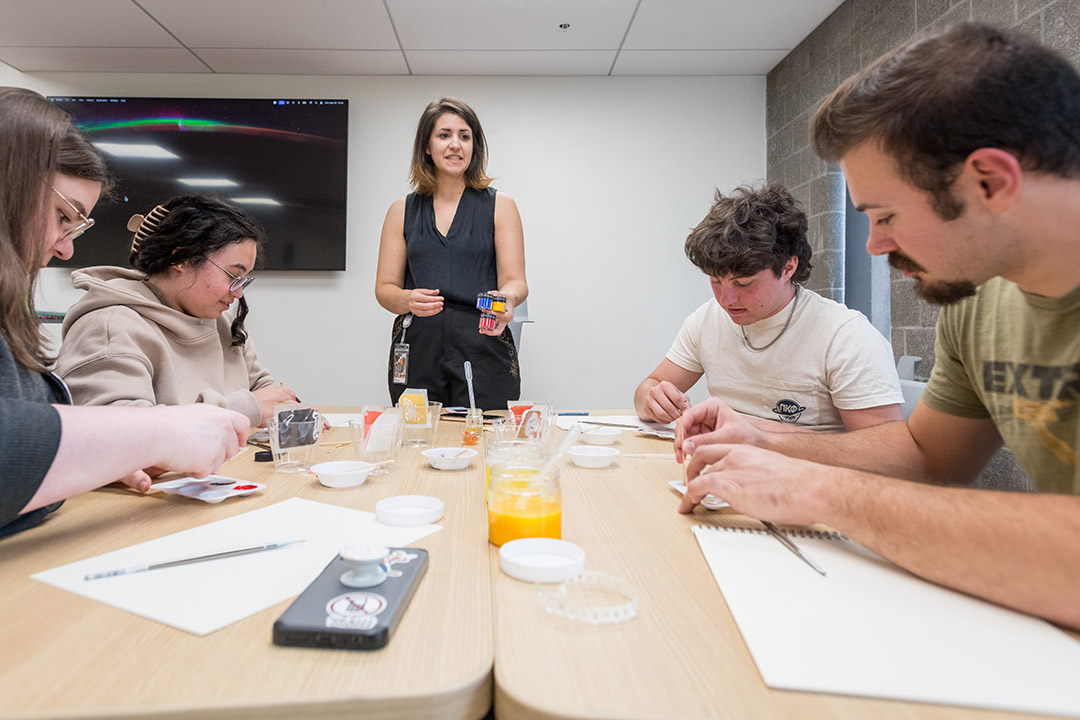Gill Tsouri and Jill Lavigne receive highly competitive DOD medical research program Discovery Award for preventive undertaking

Gill Tsouri, Professor of Electrical Engineering
What if a sensor embedded onto the grip of a firearm was sensitive enough to detect an individual’s level of intoxication? And once detected, could it disable the firing pin mechanism?
Research underway at Rochester Institute of Technology could answer those questions.
Faculty-researcher Gill Tsouri is developing a novel skin-sensing system that can be embedded onto the grip of a firearm to detect blood alcohol content levels, and once detected, the system could deter the trigger mechanism. The technology could be a step toward preventing firearm accidents, homicides, and suicides where there is a near 90 percent death rate.
“We are exploring an innovative use of state-of-the-art skin alcohol sensors in a way that has not been done before,” said Tsouri, a professor of electrical engineering in RIT’s Kate Gleason College of Engineering. “This is a firearm safety measure. Our purpose is not to prevent people from accessing their firearm, but rather to empower them to use their firearms safely and to potentially keep their firearms when seeking help.”
Tsouri received a Discovery Award, a grant of over $402,000 from the U.S. Department of Defense’s (DOD) Peer Reviewed Medical Research Program, one of the most competitive funding awards given by the organization. He will be the principal investigator on the award and will partner with Jill Lavigne, a suicide prevention researcher with experience working with the DOD and the U.S. Department of Veterans Affairs.
Taking advantage of 3D printing, Tsouri will produce a prototype and assess the sensitivity and accuracy of data received from the sensor as well as the actuation of the trigger lock.
“You cannot reasonably ask a person to become intoxicated just to test a tech system,” he said. “Instead, we can control the alcohol content in the artificial sweat to test the system.”
Biosensor devices have become popular with applications to monitoring motion, cardiac conditions and other aspects of wellbeing. Tsouri will use elements of current biosensing technology for his new design. With such a sensitive application—stopping the powerful firing mechanism of a gun—the researchers want to expand applications but must test for even more accurate and reliable sensing.
“We may find out that these current sensors need some improvements, and at that point we might find ourselves designing newer sensing modalities,” said Tsouri, who has an extensive background in implementing electronic systems for body area networks and wearable technologies. “The question we are being asked is can we make these sensors sensitive enough, and can the responses be fast enough through the grip?”
The team will integrate human factors design principles—guidelines for user-friendly and effective products—into the work with stakeholders to conduct pre-implementation research to support use and testing of the prototype. All efforts are intended to support development of a prototype that meets the needs of firearms users, health care providers tasked with safe use interventions in at-risk patients, and organizations that distribute firearms for their missions, said Lavigne.
“Dr. Tsouri has taken on an important challenge for the prevention of firearms deaths in the U.S., a large proportion of which involve firearms users when under the influence of alcohol,” she said. “An intoxication-sensing trigger lock integrated into firearms is a solution we can all get behind.”
This information does not necessarily reflect the position or policy of the government, and no official endorsement should be inferred.













